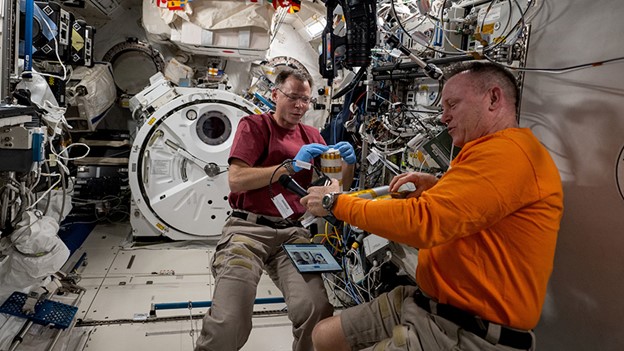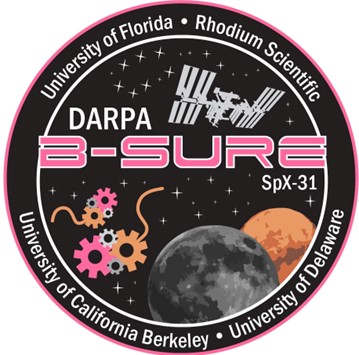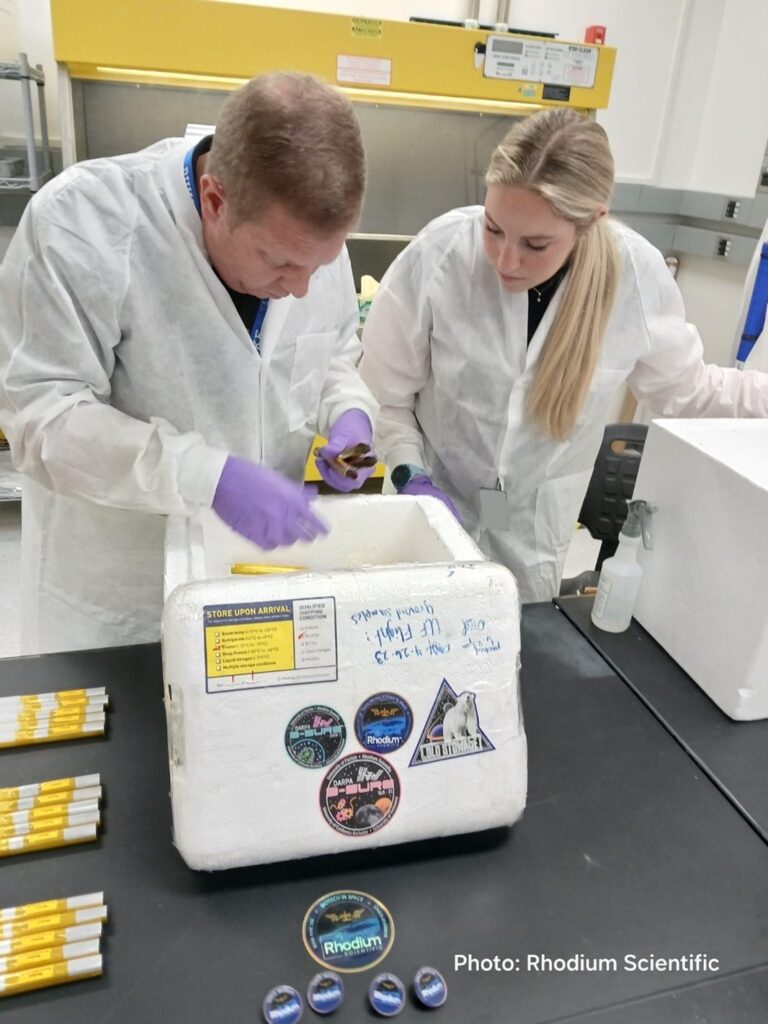UF Space Researchers Explore How Microbes Can Help Make Essential Products in Space
February 18, 2025
A new experiment that launched to the International Space Station (ISS) on November 4th, 2024, and returned on December 17th, 2024, explored how microbes can help produce useful materials like medicines and plastics in space. The experiment was part of a larger project to see how microbes perform in the low-gravity environment, and to determine if astronauts can produce essential supplies in space – a potential game-changer for future space missions on the Moon or Mars.
The research team, led by Amor Menezes, Ph.D., an Associate Professor in the Department of Mechanical and Aerospace Engineering at the University of Florida (UF), is a collaborative effort that includes researchers from UF, the University of California, Berkeley, the University of Delaware, and implementation partner Rhodium Scientific. This experiment aboard SpaceX’s CRS-31 mission was the third in a series funded by the U.S. Defense Advanced Research Projects Agency’s Biomanufacturing: Survival, Utility, and Reliability beyond Earth, or B-SURE, program.
“Our prior two flights were really all about setting up for this third one,” said Dr. Menezes. “We previously did the spade work to comprehensively characterize the biomanufacturing performance of eight different microbes across multiple days, outputs, replicates, gravity levels, culture conditions, even flights. Now, after our team carefully re-engineered these microbes on the ground for over a year, we wanted to confirm that we had successfully improved their performance in space.”
The experiment tested engineered microbes that can produce valuable compounds like vitamins and biopolymers. The microbes were put to the test in microgravity, or the weightlessness of space, and in simulated gravity conditions designed to mimic the Moon and Mars. The researchers wanted to understand how different gravity levels affect the microbes’ ability to grow and produce materials, which could impact their usefulness for space missions.
One key tool used in the research was the Variable Gravity Simulator, or VGS, which allowed the team to control the gravity level that the microbes experienced, from microgravity to lunar-like and Martian-like gravity. NASA astronaut Nick Hague installed the VGS once it arrived on the ISS and initiated the experiment by placing samples in both microgravity and lunar gravity conditions. Astronauts managed sample tubes throughout the mission, transferring them from the ISS freezer to the VGS for controlled incubations, and then returning them to the freezer at planned times. This process continued throughout the 30-day experiment, providing vital data on microbial responses to each gravity condition.
“The VGS was important because it allowed us to simulate how microbes will behave on other planets, giving us insights into how best to use microbes for producing resources during future missions,” said Hannah Roberts, a graduate student in Dr. Menezes’ lab, who engineered Escherichia coli for the spaceflight experiment. “This was the second time that we flew the VGS. The Rhodium Scientific team invited the other graduate students and I to interact with astronauts via videolink on the first flight when they worked with our sample tubes and the VGS, and it was an incredible experience.”
The results of the experiment are a game-changer for both space exploration and Earth-based manufacturing. Said Dr. Menezes: “We have a long-term goal of having microbes use essential resources in space so that astronauts can efficiently create food, medicine, fuel, and structural elements directly, without costly resupply missions from Earth. This efficiency aspect is key for extended space exploration, particularly on missions to the Moon, Mars, and beyond. My lab’s experimental and computational work is driven by increasing such efficiency.”
The research can also have a big impact on how materials are produced on Earth. Using microbes for biomanufacturing will provide a sustainable, efficient, and eco-friendly way of making essential compounds, offering an alternative to traditional industrial methods. In short, this research is a win for both space exploration and sustainable manufacturing.
Media Contact:
Emily Hinds
emilyhinds@ufl.edu
About:
The University of Florida Astraeus Space Institute is a front door for people who have shared curiosity and skills to help humans thrive as we explore our vast universe. The institute participates in groundbreaking research with leading experts to solve humanity’s next greatest challenge and feel the thrill of discovery that has inspired many generations.

Photo Credit: NASA
The image shows astronaut Nick Hague loading University of Florida experiment tubes into the Rhodium Science Chamber 1 Liter Incubation Vessel (RhSC-1LIV) prior to placement in Rhodium Scientific’s Variable Gravity Simulator centrifuge. Astronaut Barry “Butch” Willmore is holding a Rhodium Science Chamber 4MLS (RhSC-4MLS), which stores experimental samples.

Mission patch for the University of Florida experiment flying aboard the SpaceX CRS-31 mission.

Dr. Heath Mills of Rhodium Scientific and University of Florida graduate student Hannah Roberts readying completed experiment samples for transport to the CRS-31 Falcon 9 rocket.